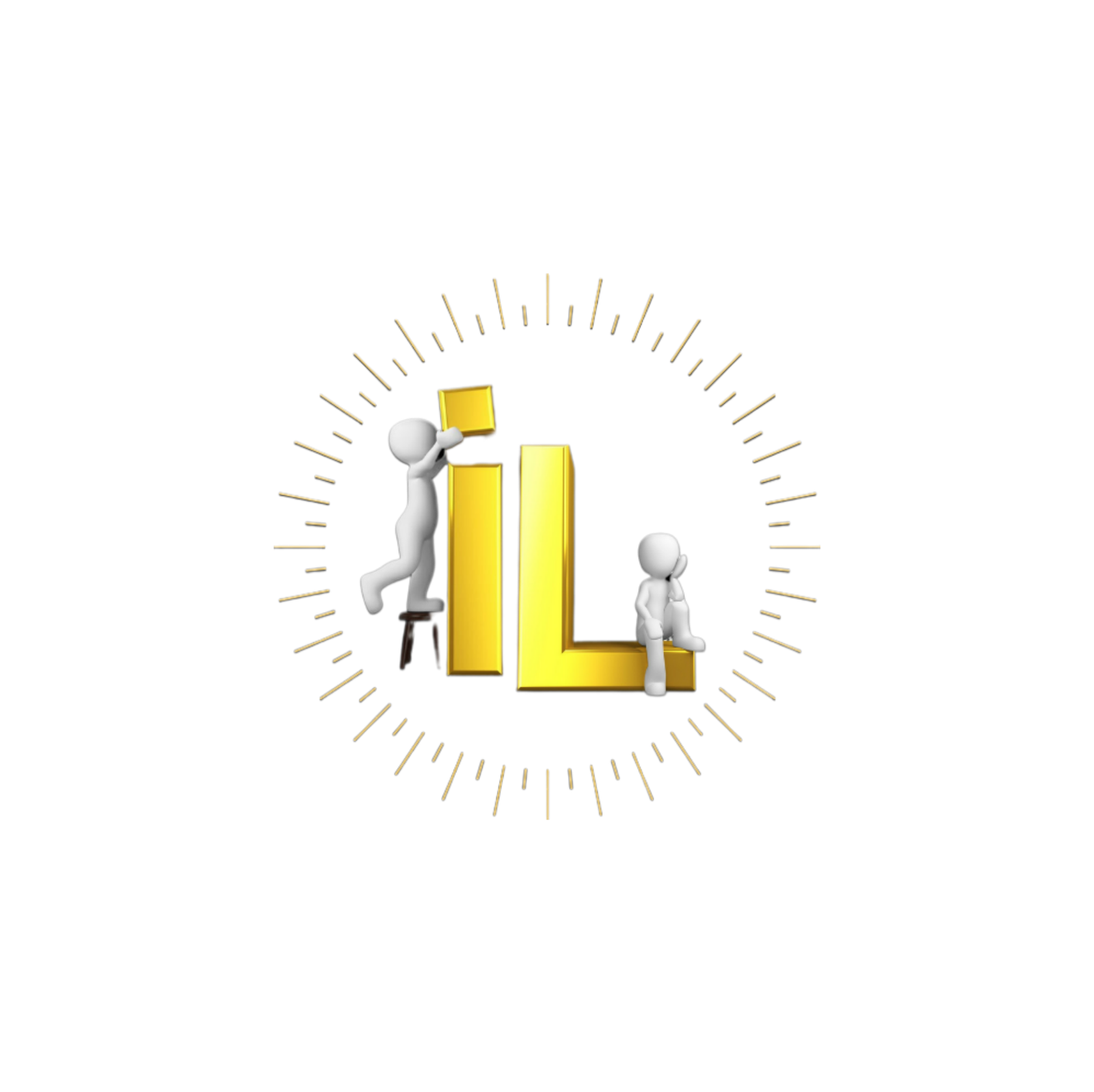What if the harmony in music and the vibrations we feel every day are linked to a universal principle? Oscillations, or oscillatory motion, are key in both nature and human creations. They range from a guitar string’s vibration to a pendulum’s swing. The frequency of these oscillations, measured in cycles per second, helps us understand them.
A 150 gram rock moving in a specific pattern at 0.32 Hz is an example of harmonic motion. This makes us wonder: how do oscillations influence our world? What can we learn from the dance of vibration and motion?
Oscillations are everywhere, from space’s gas clouds to electronic devices’ resonators. A 150 kg car and rider, along with a 50 kg cushioned block, show oscillations in our lives. As we dive into oscillations, we’ll learn about their principles, types, and uses. This includes harmonic motion and vibration, to better understand this basic phenomenon.

Key Takeaways
- Oscillations are a fundamental part of natural phenomena and human-made systems.
- Oscillatory motion is measured in frequency, which plays a significant role in understanding these phenomena.
- Harmonic motion is a type of oscillation observed in various systems, including a 150 gram rock executing harmonic motion with a frequency of 0.32 Hz.
- Oscillations are present in everyday life, from the vibration of a guitar string to the periodic motion of a pendulum.
- Understanding oscillations can provide insights into the intricate dance of vibration and periodic motion that shapes our world.
- Oscillations have numerous applications in technology, including resonators used in electronic devices.
What Are Oscillations: Understanding the Basics
Oscillations are key in physics, showing repeated motions around a central point. They are seen in many wave motions, where resonance is important. It helps figure out the frequency and amplitude of these motions. Knowing about oscillations helps us understand many natural and technological things.
Key parts of oscillations are frequency, amplitude, and how we analyze them. Frequency is how many times something moves in a set time. Amplitude is the biggest move from the middle point. Analyzing these helps us understand the systems behind the motions.
In wave motion, resonance happens when a wave’s frequency matches the system’s natural frequency. This makes the oscillations stronger. It’s vital for understanding many physical and even biological systems.
| Component | Description |
|---|---|
| Frequency | Number of oscillations per unit time |
| Amplitude | Maximum displacement from equilibrium |
| Oscillation Analysis | Study of oscillation patterns and characteristics |
By learning about oscillations, we get a better view of our world. This includes understanding wave motion, resonance, frequency, amplitude, and how we analyze them.
The Physics Behind Periodic Motion
Periodic motion is a key idea in physics. It shows up in many areas, like human heartbeats, economic cycles, and geysers in geothermal regions. It’s all about oscillation and resonance.
The formula T = 2π / ω shows how period T relates to angular frequency ω. This is important for understanding how things move back and forth. Resonance also plays a big role, making some movements stronger or weaker.
Other things like damping and frequency also affect periodic motion. The damping ratio ζ is calculated as ζ = b / 2√(mk). Knowing this helps us predict how things will move, including wave motion and vibration.
| Type of Oscillation | Characteristics |
|---|---|
| Simple Harmonic Motion | Constant amplitude, sinusoidal motion |
| Damped Oscillations | Decreasing amplitude, exponential decay |
| Resonance | Maximum amplitude, minimized damping |
In summary, the study of periodic motion is both complex and intriguing. It has many uses in science and engineering. By grasping the basics of oscillation, resonance, and damping, we can forecast how things will move. This includes periodic motion, wave motion, and vibration.
Types of Oscillations in Nature and Technology
Oscillations are key in both nature and technology. They can be broken down into several types. Harmonic motion is one, where the force on an object matches its displacement. This motion is seen in natural wonders like the Radcliffe Wave in the Milky Way.
In tech, forced oscillations are used in devices like resonators. These devices vibrate at a specific natural frequency. When an external force matches this frequency, the vibrations grow stronger. This is called resonance and is very useful.
Damped oscillations happen when a force lessens the vibration’s strength over time. This is common in systems with lots of friction, like car shock absorbers. Here’s a quick look at these oscillation types:
| Type of Oscillation | Description |
|---|---|
| Harmonic Motion | Force proportional to displacement |
| Forced Oscillations | External force amplifies specific frequencies |
| Damped Oscillations | External force reduces amplitude over time |
Knowing about different oscillations is vital for designing systems in many fields. From engineering to biology, understanding each type helps create better solutions. It’s all about recognizing the unique traits of each oscillation.
Understanding Frequency and Amplitude
When we talk about oscillations, two important things come up: frequency and amplitude. Frequency is how many times something oscillates in a second, measured in hertz (Hz). Amplitude is how far something moves from its middle point. Knowing how these two work together is key, especially when we look at the period of oscillation.
The period is how long it takes for one full cycle. It’s the opposite of frequency. To get a better grasp of how they relate, think about the wave velocity formula. This formula shows how wave speed, wavelength, and period are connected. It’s expressed as \( vw = \frac{λ}{T} \) or \( vw = f × λ \), where \( vw \) is wave speed, \( λ \) is wavelength, \( T \) is period, and \( f \) is frequency.
In different areas, like sound or ocean waves, frequency and amplitude do different things. For sound, higher frequencies mean higher pitches, and lower frequencies mean lower pitches. In ocean waves, knowing the distance between crests and the period helps figure out how fast waves move. Getting these relationships right is key for understanding and predicting how things oscillate.
Key aspects of oscillations include:
- Frequency: the number of oscillations per second, measured in hertz (Hz)
- Amplitude: the maximum displacement from the equilibrium position
- Period: the time it takes for one complete cycle, inversely proportional to frequency
- Wave velocity formula: \( vw = \frac{λ}{T} \) or \( vw = f × λ \)
By understanding these basics, we can dive deeper into the world of oscillations. This knowledge is important in many fields, from physics to engineering. Knowing how frequency, amplitude, and period work together helps us predict how things move and behave.
The Fascinating World of Mechanical Waves
Mechanical waves need a physical medium to move. They come in different types, like longitudinal waves and transverse waves. Longitudinal waves, like sound in air, move at about 343 meters per second at 20°C. Transverse waves, like those on a string or in water, move at speeds that depend on the medium.
Standing waves seem to not move at all. They happen when two waves go in opposite directions and meet. These waves have nodes (no movement) and antinodes (maximum movement). The speed of a wave is found by multiplying its frequency and wavelength: v = f × λ.
- Longitudinal waves: displacement of the medium is parallel to the direction of propagation
- Transverse waves: displacement is perpendicular to the direction of propagation
- Standing waves: appear to stand still, with nodes and antinodes
| Type of Wave | Speed | Characteristics |
|---|---|---|
| Longitudinal Waves | 343 m/s (in air) | Displacement parallel to direction of propagation |
| Transverse Waves | Varies based on medium | Displacement perpendicular to direction of propagation |
| Standing Waves | 0 (appears to stand still) | Nodes and antinodes |
Resonance: When Oscillations Align
Resonance happens when an external force’s frequency matches a system’s natural frequency. This leads to bigger oscillations. It’s seen in many systems, like mechanical, electrical, and acoustic ones.
In mechanical systems, resonant frequency is reached when the driving frequency matches the system’s natural frequency. This makes the amplitude increase. For instance, a mass-spring system’s natural frequency can be found using the formula: \(f = \frac{1}{2\pi} \sqrt{\frac{k}{m}}\). Here, \(k\) is the spring constant and \(m\) is the mass.
Some important things about resonance are:
- Resonance occurs in various systems, including mechanical, electrical, and acoustic systems.
- Natural frequency or resonant frequency varies based on the object’s structure.
- Small periodic forces near a resonant frequency can produce amplitudes significantly larger than at non-resonant frequencies.
Resonance has many uses, like in acoustics to boost sound in musical instruments. It’s also used in electrical engineering for tuned circuits to improve signal reception.

Natural Frequency and Its Significance
Natural frequency, or eigenfrequency, is the frequency at which a system vibrates without an outside push. It’s key to understanding how systems work and designing them well. The natural frequency changes based on the system’s mass and stiffness.
Calculating natural frequency is important in engineering and physics. The formula is f = √(k ÷ m) ÷ 2π, where k is the spring constant and m is the mass. For instance, with a spring constant of 150 N/m and a mass of 2 kg, the natural frequency is about 1.38 Hz.
Calculating Natural Frequency
To find the natural frequency, we need the spring constant and mass values. The formula f = √(k ÷ m) ÷ 2π is used in engineering and physics. It helps find the natural frequency of a system.
Important things to remember when calculating natural frequency include:
- The natural frequency depends on the system’s mass and stiffness.
- Calculating natural frequency is key for designing efficient systems.
- External factors like damping and resonance can affect natural frequency.
Impact on Structural Design
The natural frequency greatly affects structural design. Engineers must think about it when designing systems. This ensures they can handle external forces well and work efficiently.
Understanding natural frequency helps engineers design better systems. These systems are more stable, efficient, and reliable. Natural frequency is crucial in ensuring structures and machines are safe and perform well.
| System | Natural Frequency | Significance |
|---|---|---|
| Spring-Mass System | 1.38 Hz | Stability and Performance |
| RLC Circuit | Depends on R, L, and C | Efficient Operation |
Practical Applications of Oscillatory Motion
Oscillatory motion is used in many areas like technology, medicine, and environmental science. It’s key in devices like resonators for communication and medical tools. For example, springs and damping help cars by cutting down on bumps by 30%.
In our daily lives, we see vibration, periodic motion, and wave motion everywhere. Pendulum clocks, birds flying, and musical strings all show how common it is. These examples highlight how much we rely on oscillatory motion.
Some key uses of oscillatory motion include:
- Resonators in technology
- Medical equipment, such as ultrasound machines
- Environmental science, including the study of climate patterns and the water cycle
In summary, oscillatory motion is crucial in many parts of our lives. It helps in technology, medicine, and environmental science. By understanding and using its principles, we can make big strides in these fields.
| Application | Description |
|---|---|
| Resonators | Crucial in communication systems and medical equipment |
| Medical Equipment | Used in ultrasound machines and other diagnostic tools |
| Environmental Science | Studied in climate patterns and the water cycle |
Analyzing Complex Oscillation Patterns
Oscillation analysis is key to understanding complex systems. It breaks down signals into their frequencies. This helps researchers in physics and engineering to spot patterns and predict outcomes.
Recently, scientists have been studying vibration patterns in different systems. For instance, the Radcliffe Wave study has revealed complex oscillations in the Milky Way. By using Fourier analysis, they can see the individual parts of complex signals. This gives a clearer view of the system’s dynamics.
Some main ways to analyze complex oscillations include:
- Fourier analysis: breaking down a signal into its component frequencies
- Wave interference: studying the overlap of two or more waves to form a new pattern
- Phase relationships: examining the relative timing of oscillations
These methods are vital for understanding and forecasting complex systems. They are used in physics, engineering, and biology.
Using these techniques, researchers can better understand complex systems. They can predict how these systems will behave. Whether it’s looking at vibration patterns in machines or frequency analysis in biology, oscillation analysis is a powerful tool.

| Method | Description |
|---|---|
| Fourier analysis | Breaking down a signal into its component frequencies |
| Wave interference | Studying the overlap of two or more waves to form a new pattern |
| Phase relationships | Examining the relative timing of oscillations |
Modern Technologies Utilizing Oscillations
Oscillations are key in many modern technologies. They are found in electronic devices, medical equipment, and communication systems. These technologies use oscillations to work well and perform better. For example, electronic devices need stable frequencies for signal processing and sending.
In medical equipment, like MRI scanners, oscillations help make detailed images of the body’s inside. ECG machines also use oscillations to track heart signals. This makes diagnosing heart issues more accurate.
The table below shows some examples of how oscillations are used in modern tech:
| Technology | Application |
|---|---|
| Electronic Devices | Signal processing and transmission |
| Medical Equipment | Medical imaging and diagnosis |
| Communication Systems | Signal transmission and reception |
In summary, oscillations are vital in many modern technologies. They help these technologies work better and make big improvements in different areas.
The Future of Oscillation Research
Oscillation research has made great strides, from studying neuronal oscillations to exploring future technologies. The field keeps growing, with new findings and uses popping up often. A big focus is on vibration and how it affects different systems, like living things and machines.
Recent studies have looked into periodic motion in oscillatory systems. This has helped us understand the complex dynamics better. New tech, like advanced sensors and data tools, lets researchers dive deeper into oscillations. This has led to a better grasp of the underlying mechanics and opened up new uses in energy, medicine, and transport.
Some key areas in oscillation research include:
- Looking into how vibration affects materials and structures
- Creating new tech to use the power of oscillations
- Studying the part of periodic motion in living systems
As research moves forward, we’ll see more breakthroughs and uses. The future of oscillation research is bright, with lots of potential to change industries and make our lives better.
| Area of Focus | Description |
|---|---|
| Oscillation Research | Investigating the effects of vibration on materials and structures |
| Future Technologies | Developing new technologies to harness the power of oscillations |
| Periodic Motion | Exploring the role of periodic motion in biological systems |
Conclusion: The Universal Impact of Oscillations
Oscillations play a key role in both natural phenomena and technological applications. They range from the smallest particles to the vast cosmos. These rhythmic motions shape our world, from atomic bonds to celestial bodies.
The beauty of oscillations is seen in many things. Like a pendulum’s swing, a heartbeat, or the frequencies in electronics. They are crucial for understanding our physical world. They help transfer energy, amplify signals, and keep systems in sync.
Studying oscillations opens up new insights into their universal impact. It shows how forces shape our world and drive technology. This field is full of promise, offering deeper understanding of the universe.
FAQ
What are oscillations and how are they defined?
Oscillations are the back-and-forth motion of an object around a stable point. They have key parts like frequency, amplitude, and the role of equilibrium.
What are the different types of oscillations found in nature and technology?
There are many types of oscillations, like simple harmonic motion and damped oscillations. Each type has its own characteristics and uses in nature and technology.
How are frequency and amplitude related in oscillatory systems?
Frequency is how many times an object moves per second. Amplitude is the farthest point it goes from its stable position. These two are key to understanding oscillations.
What are the different types of mechanical waves and how do they propagate?
Mechanical waves need a medium to move. Types include longitudinal, transverse, and standing waves. Knowing about these helps us understand how waves work.
What is the concept of resonance, and how does it affect oscillatory systems?
Resonance happens when an external force matches a system’s natural frequency. This makes the oscillations stronger. It’s vital for both natural and man-made systems.
What is the significance of natural frequency in oscillatory systems?
Natural frequency is the rate at which a system vibrates without an outside force. Knowing how to find it is key for designing and improving systems.
How can complex oscillation patterns be analyzed and understood?
To understand complex patterns, we use tools like Fourier analysis and wave interference. These help us predict and model complex systems.
What are some of the modern technologies that utilize oscillations?
Oscillations are vital in many modern technologies, like electronics and medical devices. They show how important oscillations are and how they might evolve in the future.
Source Links
- https://groups.spa.umn.edu/physed/Research/TAOrientation/CR 6 Oscillations.pdf
- https://fastercapital.com/topics/exploring-the-physics-of-oscillation-and-frequency.html
- https://www.lsop.colostate.edu/2018/07/16/everything-you-need-to-know-about-oscillations-waves/
- https://phys.libretexts.org/Bookshelves/University_Physics/University_Physics_(OpenStax)/Book:_University_Physics_I_-_Mechanics_Sound_Oscillations_and_Waves_(OpenStax)/15:_Oscillations
- https://en.wikipedia.org/wiki/Oscillation
- https://bpb-us-e1.wpmucdn.com/sites.harvard.edu/dist/0/550/files/2023/11/waves_oscillations.pdf
- https://byjus.com/jee/oscillation/
- https://www.ferrovial.com/en/stem/oscillations-and-waves/
- https://knowablemagazine.org/content/article/living-world/2020/cell-oscillations
- https://www.brainkart.com/article/Types-of-Oscillations_36311/
- https://openstax.org/books/physics/pages/13-2-wave-properties-speed-amplitude-frequency-and-period
- http://labman.phys.utk.edu/phys221core/modules/m11/harmonic_motion.html
- https://quizizz.com/en-us/oscillations-and-mechanical-waves-worksheets
- https://quizgecko.com/learn/oscillations-and-waves-concepts-knlqwu
- https://dracademy.co.in/oscillations-and-waves/
- https://en.wikipedia.org/wiki/Resonance
- https://scienceready.com.au/pages/resonance-in-mechanical-systems?srsltid=AfmBOoqzJUMlMMIBmlushZyM40OY_AvQ1fMzTOs2mK4Kk3mJAT9BdEPV
- https://en.wikipedia.org/wiki/Natural_frequency
- https://resources.pcb.cadence.com/blog/2020-natural-frequency-formula-what-is-it-and-why-is-it-important
- http://www.scienceclarified.com/everyday/Real-Life-Physics-Vol-2/Oscillation-Real-life-applications.html
- https://tuitionphysics.com/june-2022/observing-physics-5-oscillatory-motions-to-see-in-real-life/
- https://byjus.com/physics/oscillatory-motion/
- https://journals.ametsoc.org/view/journals/clim/6/10/1520-0442_1993_006_1972_cpopa_2_0_co_2.xml
- https://pmc.ncbi.nlm.nih.gov/articles/PMC10963234/
- https://isonewswire.com/2023/11/27/iso-ne-continues-to-gain-international-recognition-for-innovative-oscillation-source-location-technology/
- https://www.e3s-conferences.org/articles/e3sconf/pdf/2021/06/e3sconf_ght2020_01017.pdf
- https://www.rroij.com/open-access/applications-of-electrical-oscillations-in-electronics-and-communication.php?aid=94573
- https://pmc.ncbi.nlm.nih.gov/articles/PMC7058255/
- https://pmc.ncbi.nlm.nih.gov/articles/PMC8121326/
- https://www.nature.com/articles/s42003-024-06083-y
- https://pressbooks.bccampus.ca/douglasphys1107/chapter/10-1-hookes-law-oscillations/
- https://pmc.ncbi.nlm.nih.gov/articles/PMC6668003/
- https://pressbooks.online.ucf.edu/osuniversityphysics/chapter/15-6-forced-oscillations/
Click here to learn more about this topic in a related article.





